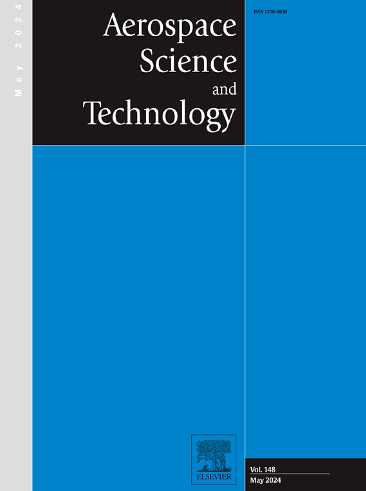Attitude control of variable swept-wing aircraft: A novel composite control strategy
IF 5
1区 工程技术
Q1 ENGINEERING, AEROSPACE
引用次数: 0
Abstract
To address the complex issues of discontinuous disturbances, parameter uncertainties, actuator deadzone, and saturation nonlinearity in Variable Swept-Wing Near Space Vehicles (NSV), an attitude controller combining reinforcement learning and adaptive switching sliding mode control is proposed, along with an adaptive threshold event-triggered mechanism to reduce the actuator executing frequency. Firstly, the motion characteristics of the Variable Swept-Wing NSV across the full range of operating modes are modeled as a nonlinear switched system. Secondly, a nonlinear switched disturbance observer is employed to estimate the composite disturbances caused by discontinuous disturbances and parameter uncertainties. By introducing a deadzone right inverse function and designing an auxiliary system, the composite nonlinearity of the actuator are effectively addressed. An adaptive multi-modal switching sliding mode controller is then proposed based on the backstepping method to achieve basic control. Subsequently, considering the higher dimensionality of aerodynamic control surfaces and the increased complexity of aerodynamic characteristics in the subsonic mode, which imposes stricter control requirements, a reinforcement learning-based controller is designed. Leveraging the self-learning and optimization capabilities of reinforcement learning, which does not rely on an accurate model, the controller achieves end-to-end control of the horizontal canard. Finally, an event-triggered mechanism with an adaptively varying threshold is also developed. The multi-Lyapunov stability theory and the average dwell-time theory are employed to guarantee the stability of the closed-loop nonlinear switched system while excluding the undesired Zeno behavior. Simulations and comparative experiments demonstrate that the proposed method achieves superior tracking accuracy and control performance, while the adaptive threshold event-triggered mechanism effectively reduces data transmission.
求助全文
约1分钟内获得全文
求助全文
来源期刊

Aerospace Science and Technology
工程技术-工程:宇航
CiteScore
10.30
自引率
28.60%
发文量
654
审稿时长
54 days
期刊介绍:
Aerospace Science and Technology publishes articles of outstanding scientific quality. Each article is reviewed by two referees. The journal welcomes papers from a wide range of countries. This journal publishes original papers, review articles and short communications related to all fields of aerospace research, fundamental and applied, potential applications of which are clearly related to:
• The design and the manufacture of aircraft, helicopters, missiles, launchers and satellites
• The control of their environment
• The study of various systems they are involved in, as supports or as targets.
Authors are invited to submit papers on new advances in the following topics to aerospace applications:
• Fluid dynamics
• Energetics and propulsion
• Materials and structures
• Flight mechanics
• Navigation, guidance and control
• Acoustics
• Optics
• Electromagnetism and radar
• Signal and image processing
• Information processing
• Data fusion
• Decision aid
• Human behaviour
• Robotics and intelligent systems
• Complex system engineering.
Etc.
 求助内容:
求助内容: 应助结果提醒方式:
应助结果提醒方式:


